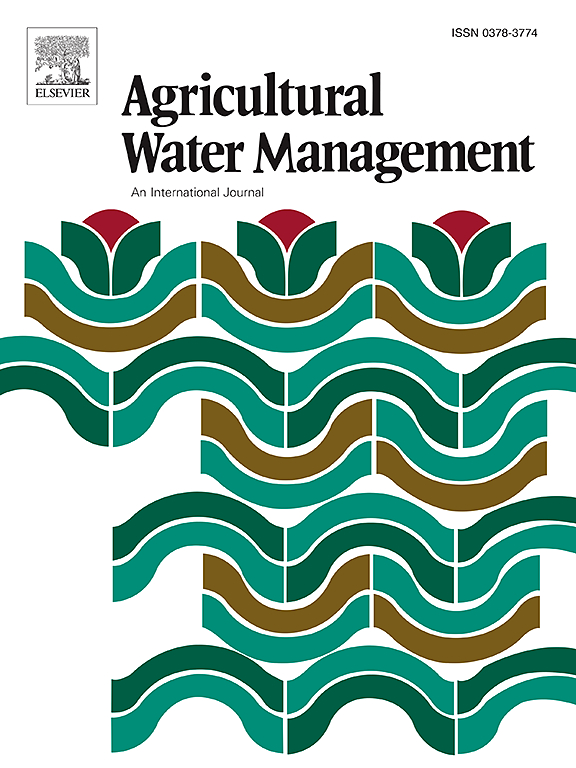农业原位污染控制和碳负性增强的创新施肥策略
IF 5.9
1区 农林科学
Q1 AGRONOMY
引用次数: 0
摘要
农业施肥产生的非点源污染可能进入邻近水体,对环境水质产生负面影响。因此,本研究旨在评价创新施肥策略对农业面源污染控制的有效性,并探讨其对碳负性的影响。结果表明,有机肥由于其较高的可溶性成分含量,更容易被降雨或灌溉冲走。竹炭处理、微生物剂处理或两者同时处理显著降低了入渗和地表径流中的氮浓度。被冲走的磷表现出不同的趋势,因为添加微生物剂,包括增磷细菌,将土壤中的固定无机磷转化为水溶性磷。此外,降雨事件中的冲刷和淋滤是施肥后农田养分流失的主要原因。作物的养分吸收增加了15 - 30% %,入渗和径流中的养分量减少了5 - 10% %。通过减肥和创新施肥策略相结合,作物产量保持在与全量施肥量相近的水平。过量施肥不一定能促进作物生长,反而可能造成作物损害和肥料损失。结果表明,在半有机施肥中同时添加微生物剂和竹炭,通过土壤基质的协同作用,碳排放量减少幅度最大(80.75 %)。本研究采用的创新施肥策略可以(1)在不影响作物整体生长和产量的情况下,有效减少农业活动带来的非点源污染;(2)在减少养分流失、增强土壤固碳和减少温室气体排放方面产生协同效应。本文章由计算机程序翻译,如有差异,请以英文原文为准。
Innovative fertilization strategies for in-situ pollution control and carbon negativity enhancement in agriculture
Non-point source pollution resulting from agricultural fertilization may enter neighboring water bodies, negatively impacting the environmental water quality. Therefore, this study aims to evaluate the efficiency of innovative fertilization strategies for agricultural non-point source pollution control and explore their benefit for carbon negativity. The results show that organic fertilizers are more likely to be washed out by rainfall or irrigation due to their higher soluble component content. The treatments using bamboo biochar, microbial agents, or both significantly reduced the nitrogen concentrations in infiltration and surface runoff. The washed-away phosphate demonstrated a different trend because adding microbial agents, including phosphorus-solubilizing bacteria, converted fixed inorganic phosphorus in the soil into water-soluble phosphorus. In addition, the scouring and leaching in rainfall events mainly cause the farmland's nutrient loss after fertilizer application. The nutrient uptake by crops was increased by 15–30 %, and nutrient mass in infiltration and runoff waters was reduced by 5–10 %. By combining fertilizer reduction and innovative fertilization strategies, the crop yield remained similar to that with a full amount of fertilizer application. Over-dose application in fertilizer may not necessarily promote crop growth but may cause crop damage and fertilizer loss. The carbon negativity benefit of using innovative fertilization strategies was explored, and adding both microbial agents and bamboo biochar in half organic fertilization demonstrated the highest reduction (80.75 %) in carbon emission through synergistic interactions in the soil matrix. The innovative fertilization strategies employed in this study can (1) effectively reduce non-point source pollution from agricultural activities without impairing crops' overall growth and yield and (2) induce the synergistic effects in reducing nutrient loss, enhancing soil carbon sequestration, and mitigating greenhouse gas emissions.
求助全文
通过发布文献求助,成功后即可免费获取论文全文。
去求助
来源期刊

Agricultural Water Management
农林科学-农艺学
CiteScore
12.10
自引率
14.90%
发文量
648
审稿时长
4.9 months
期刊介绍:
Agricultural Water Management publishes papers of international significance relating to the science, economics, and policy of agricultural water management. In all cases, manuscripts must address implications and provide insight regarding agricultural water management.
 求助内容:
求助内容: 应助结果提醒方式:
应助结果提醒方式:


